A popular and fast-acting drug to relieve unpleasant sensations of pain is Diclofenac. It is used by many people to relieve inflammatory processes. What are the forms of drug release, when should I take the medicine, and how to do it?
Material Content:
- 1 Release form, composition
- 2 Pharmacological properties and indications for use
- 3 Age restrictions on admission
- 4 Instructions for use and dosage of Diclofenac
- 5 You can or take diclofenac during pregnancy and lactation
- 6 Drug Interactions with Other Drugs
- 7 Contraindications, side effects and overdose
- 8 Analogs
Release form, composition
Since drugs with diclofenac sodium can be found in many different forms, it is always easy to choose a convenient option. Everyone is guided by the criteria regarding what kind of pain he needs to eliminate, how quickly it needs to be done and what is more convenient to take at that moment.
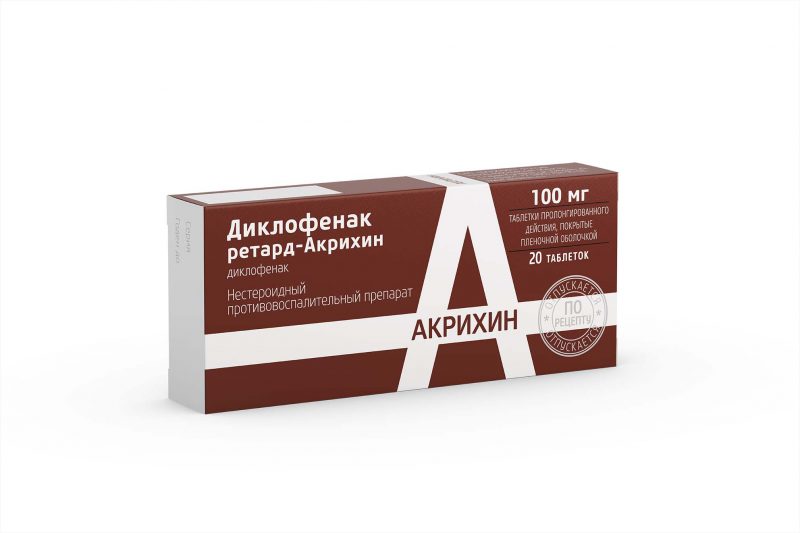
There are several forms of medications with this substance:
- tablets (regular and prolonged);
- solutions for injection;
- rectal suppositories;
- ointment for rubbing;
- gel for external use;
- solution for eye instillation.
Each of the presented forms has additional components along with the main active substance.
Enteric-coated tablets include 25 or 50 mg of diclofenac, starch, lactose or sucrose, magnesium stearate, titanium dioxide, talc and povidone.
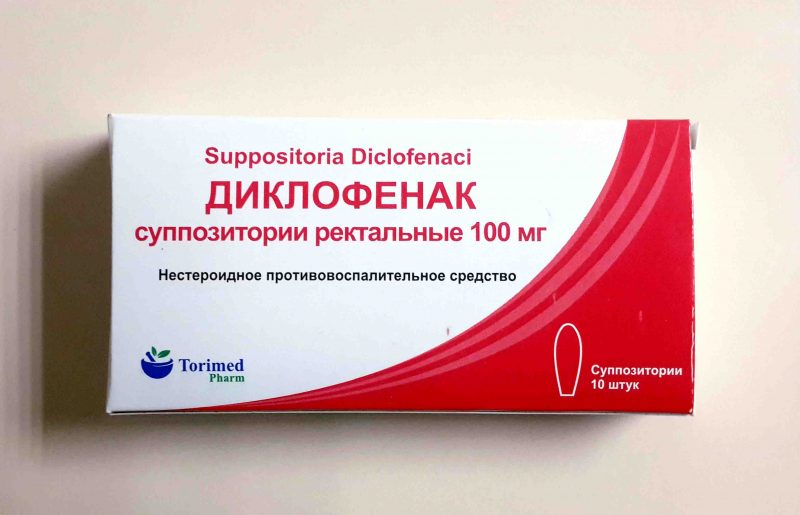
In special capsules with prolonged action (they are called retard), 100 mg of the active drug is included, as additional components are presented:
- hyetellosis;
- sodium alginate;
- hypromellose;
- magnesium stearate.
The most popular and convenient for quick application of ointment can be found in pharmacies, presented in two versions: with a dosage of 10 or 20 mg of active substance per 1 g of ointment. For convenience of application, they also have propylene glycol, macrogol (400 and 1500) and dimexide.
Convenient ampoules of 3 ml of solution - it is in this form that injections are released. In 1 ml - 25 mg of the substance, as well as benzyl alcohol, propylene glycol, sodium hydroxide and water.
Rectal preparations are composed of diclofenac (25, 50 or 100 mg) and solid fats.
External gel (more liquid consistency than a similar ointment) is presented on the pharmaceutical market at a dosage of 10 mg per 1 g of the drug and 50 mg per 1 g of the product. Additional components of this form of the drug: benzyl alcohol, purified water, isopropyl alcohol, sodium metabisulfite, polysorbitol.
In drops for eye infusions - 1 mg per 1 ml of the drug, sodium thiosulfate, boric acid, propylene glycol, sodium hydroxide, potassium chloride and purified water.
Pharmacological properties and indications for use
This group of medicines is highly effective due to its special effect on prostaglandins, pathogens of various kinds of inflammation that occur in the human body. "Diclofenac" in pharmacology belongs to a large group of non-steroidal anti-inflammatory drugs (NSAIDs). The active substance inhibits the development of inflammation, thus providing a reduction in pain.
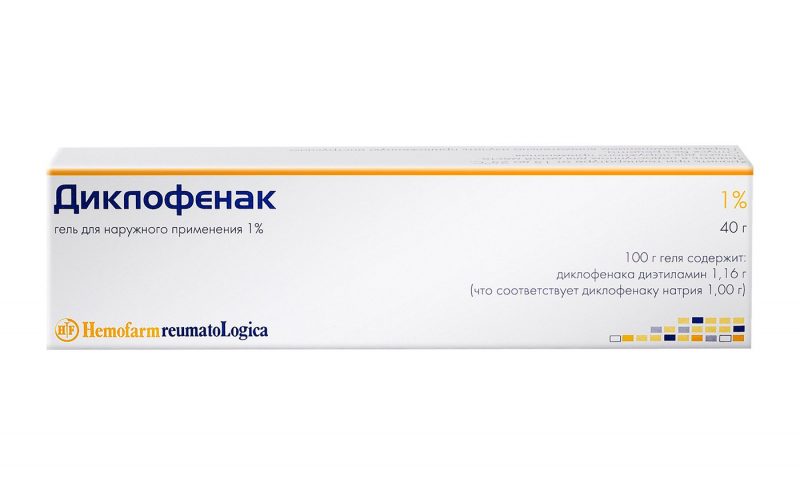
The tool has the following characteristics:
- painkiller;
- decongestant;
- anti-inflammatory;
- antiallergenic;
- antipyretic.
The anti-inflammatory effect is more pronounced: when applying the drug to the place of pain localization, relief occurs in the shortest possible time, swelling is relieved.
When do doctors prescribe this drug?
Indications are:
- rheumatic pathologies;
- arthritis of various origins;
- osteochondrosis;
- Ankylosing spondylitis;
- muscle sprains, joint inflammation after
- injuries, injuries, dislocations;
- neuralgic syndromes;
- radiculitis;
- pain after surgery;
- gout;
- prostatitis;
- hepatic colic;
- migraine headaches;
- inflammation of the pelvic organs;
- toothache;
- conjunctivitis;
- myalgia;
- acute otitis media, laryngitis, sinusitis.
It should be borne in mind that “Diclofenac” only stops, or reduces pain, but does not eliminate the cause of their occurrence. Therefore, the use of the drug is possible only with an integrated approach.
Age restrictions on admission
All forms of the drug should not be taken for children under 6 years of age. Also, pediatricians do not prescribe a drug in the form of suppositories 50 mg, injections and enteric capsules in the treatment of patients under 14 years of age. Only adults, starting at the age of 18, can be prescribed retard tablets, eye drops, and rectal suppositories 100 mg.
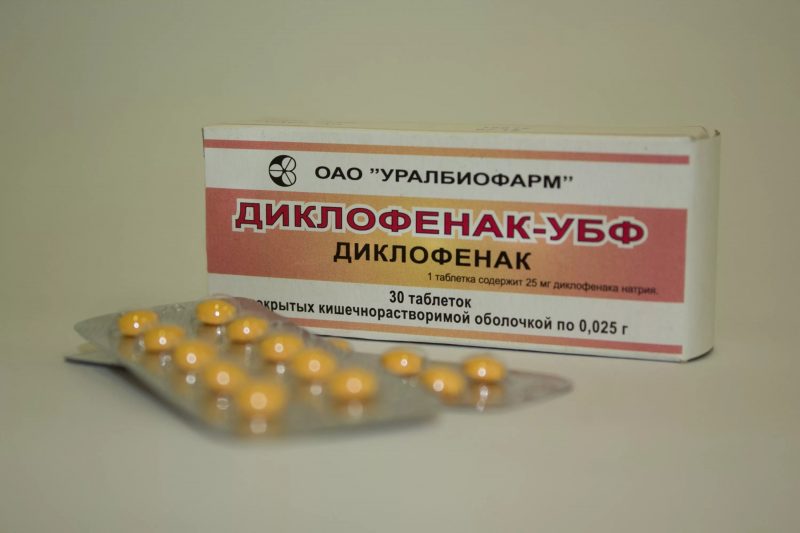
It is also necessary to take into account the peculiarities of use for older patients. After 60 years, use of Diclofenac sodium-based products should be under close medical supervision so as not to cause unwanted side effects.
Instructions for use and dosage of Diclofenac
Doctors do not advise to independently decide on the start of taking the drug due to the dangerous consequences that arise due to improper dosage.
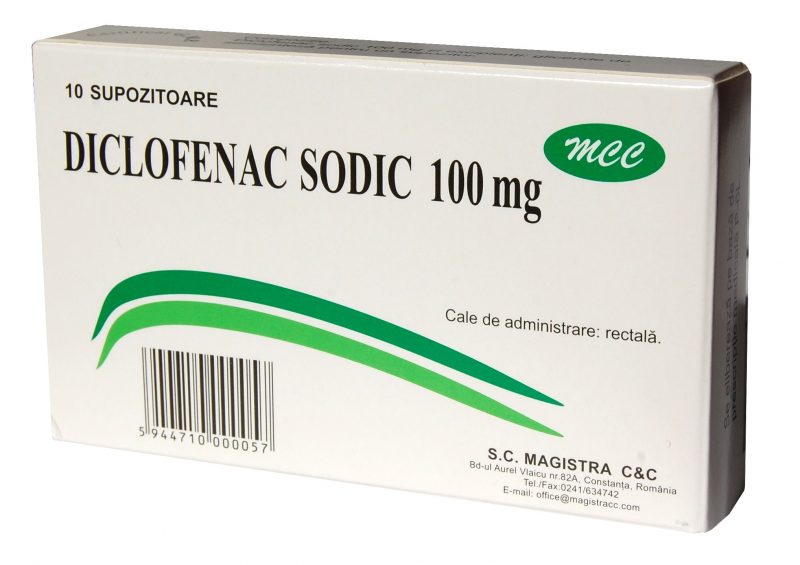
External products with diclofenac can be applied to the skin without a doctor's prescription if there is acute pain after an injury that should be quickly removed to avoid pain shock. But a relatively long course of treatment with different forms of the drug - all factors must be taken into account, which only a doctor can do.
Diclofenac tablets
The timing of the intake (before meals or after) depends on the required speed of action of the drug. It is better not to chew the tablets, but swallow them completely and drink plenty of clean, still water.

The daily dose of enteric tablets for patients from 14 years old is in the range of 50 to 150 mg of Diclofenac sodium. It is divided into 2 to 3 doses. Long-acting drugs are used once a day, not more than 100 mg.
Most often, the duration of treatment is 10-14 days.
Candles

The dose of rectal drugs, the maximum permissible throughout the day:
- adult patients - 100 mg;
- adolescents from 14 years old - 50 mg.
Ointment for external use
The dosage that the instructions for the drug offer.
| Age category | Single dose, g | Frequency of application per day, times | The maximum daily dose, g |
|---|---|---|---|
| Adults children from 12 years old | 3 — 4 | 3 — 4 | 8 |
| Children 6 to 12 years old | 1 — 2 | 1 — 2 | 4 |
Diclofenac ointment does not need to be used regularly for more than two weeks. You can continue the therapeutic course only as directed by a specialist, if there is an urgent need.
Diclofenac Injection Ampoules
It is with this type of drug that anesthesia occurs in the shortest possible time.
In a bottle of injections "Diclofenac" is 75 mg of the drug. During the day, adult patients can prick 1-2 ampoules.
To carry out injection treatment is not worth more than 5 days.
Eye drops
In the form of special infusions, the medicine is used in operations of the organs of vision:
- with cataracts - 2 hours before the intervention, 1 drop in 4 doses every half hour, after surgery - 1 drop 3 times a day;
- with keratectomy - 1 drop 2 times 3 times 1 hour before surgery; after the intervention - 1 drop twice a hour and 4 times a day.
Drops help reduce pain after the intervention.
Gel for external use
In order to anesthetize adults and children over 12 years of age, you can rub 2 g of the drug 2 to 3 times a day. Patients from 6 to 12 years should be limited to a dosage of 1 g, apply the gel 1-2 times a day.

It is worthwhile to carefully monitor the duration of use, the course of treatment is a maximum of two weeks.
You can or take diclofenac during pregnancy and lactation
A feature of the drug is its ability to effectively penetrate tissue. That is why obstetricians are forbidden to use in the last stages of pregnancy, when the time of birth is approaching.

Diclofenac crosses the placenta, which can cause serious disorders:
- reduce uterine contractility;
- provoke bleeding.
And what should mom do after having a baby? Unfortunately, there is a high risk of the substance getting into breast milk, even if you use the product only externally. Therefore, nursing mothers can use ointment and gel only taking into account the possible risk for the baby, after consulting with doctors. And about other forms of the drug, there can be no question.
Drug Interactions with Other Drugs
All medicines affect each other, so it is very important to know about the compatibility of drugs before including them in drug therapy.
- You can not simultaneously take the discussed drug together with other NSAIDs and glucorticosteroids. This threatens with impaired gastrointestinal tract and bleeding.
- Phenytoin, digoxin, or lithium preparations increase their concentration in the blood if taken together with the drug in question.
- Diclofenac reduces the effect of drugs against high blood pressure, sleeping pills, antidiabetic drugs and diuretics. Also, this combination leads to the accumulation of potassium in the plasma.
- Acetylsalicylic acid inhibits the effectiveness of the drug if taken together with Diclofenac sodium.
- When taken with cyclosporine and methotrexate, the degree of toxic effects on the kidneys increases.
- Concomitant use with anticoagulants causes hematopoiesis.
Contraindications, side effects and overdose

It is forbidden to use the drug in such conditions:
- hypersensitivity to NSAIDs, other components of the drug;
- infertility;
- preparation for conception;
- children's age up to 6 years (candles, injections - up to 14 years, retard capsules, drops - up to 18 years);
- 3 trimester of pregnancy;
- the period of breastfeeding;
- hematopoiesis pathology;
- peptic ulcer;
- pathology of the liver and kidneys;
- asthma;
- ischemia;
- heart failure;
- bleeding in the digestive tract;
- inflammation of the rectum (for the use of suppositories).
Also, the doctor must take into account possible complications when taking the drug during the following conditions or diseases:
- high cholesterol;
- diabetes;
- advanced age (after 60 years);
- anemia;
- arterial hypertension;
- pregnancy in the first two stages;
- infantile hyperthermia.

Among the side effects that occur during the use of the drug, most often observed:
- digestive disorders, nausea, bouts of vomiting;
- headaches, dizziness;
- visual dysfunction;
- insomnia;
- tremor of limbs;
- skin rash.
If you exceed the dosage, unpleasant symptoms are possible:
- migraine;
- cramps
- loss of consciousness;
- nausea, vomiting;
- liver damage.
It is safer to use the drug externally. If you apply ointment or gel, then an overdose or the appearance of unpleasant consequences are rare.
Analogs
Means having the same active substance in their composition are presented in a large assortment in modern pharmacology.
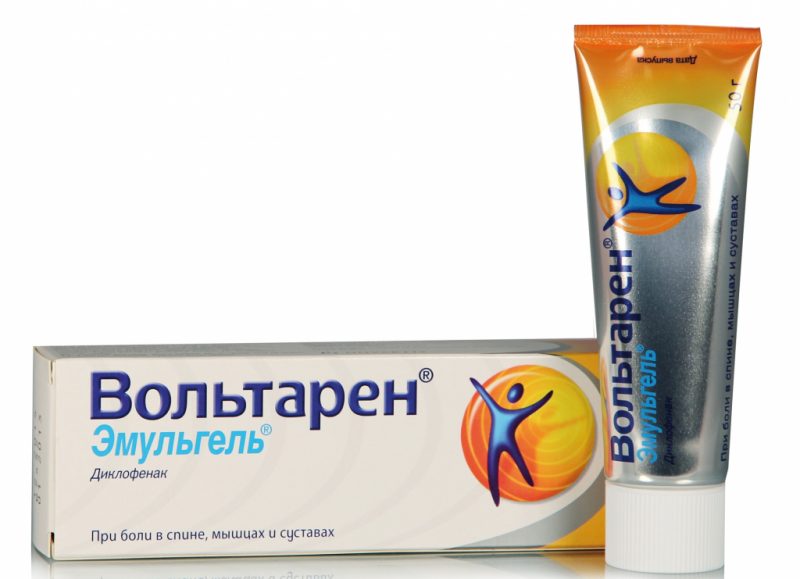
The analogs of the tablet and injection forms should be called the medicines “Ortophen”, “Voltaren”, “Adolor”, “Bioran”. Among the ointments and gels of similar effect, Voltaren, Diklak, and Diklobene should be distinguished.
And here is a list of similar tools:
- "Aceclofenac";
- "Ketanov";
- Nise
- "Meloxicam";
- "Arthrosilen";
- Ibuprofen
- "Final gel";
- "Fastum gel";
- Movalis.
Drops for the eyes also have their own synonyms - "Uniklofen", "Voltaren Ofta", as well as similar drugs in action - "Broxinak", "Indocollyr".












